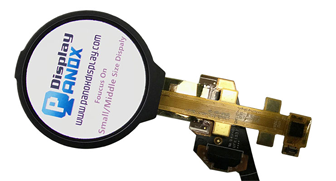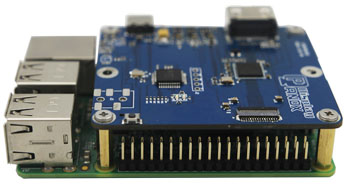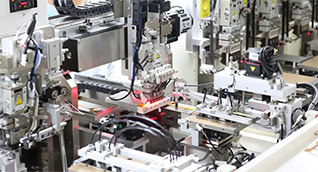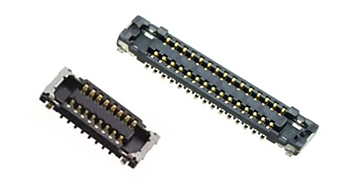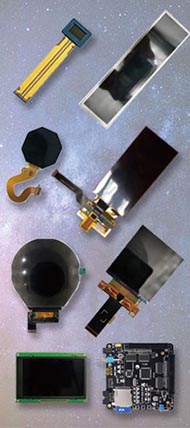A quantum cascade laser (QCL) is a semiconductor laser that emits mid- to far-infrared light by exploiting electron transitions within engineered quantum well structures. Unlike traditional diode lasers, QCLs generate photons through intersubband transitions in multiple cascaded quantum wells, enabling tunable wavelengths and high power for applications in spectroscopy, sensing, and communications.
What is a quantum cascade laser and how does it operate?
A quantum cascade laser is a unipolar semiconductor laser composed of dozens to hundreds of alternating layers of semiconductor materials forming multiple quantum wells. Electrons injected into the device cascade through these quantum wells, undergoing intersubband transitions that emit photons at each stage. This cascade process allows a single electron to generate multiple photons, significantly increasing the optical output.
The laser’s emission wavelength is determined by the thickness and composition of the quantum wells rather than the material bandgap, enabling precise wavelength engineering typically in the mid-infrared to terahertz spectral regions. An applied voltage drives the electron flow through the structure, with active regions designed to maximize stimulated emission and population inversion.
How does the quantum cascade structure differ from conventional semiconductor lasers?
Traditional semiconductor lasers produce light through electron-hole recombination across the bandgap (interband transitions), limiting emission wavelengths to near-infrared or visible ranges. In contrast, QCLs operate via intersubband transitions within the conduction band of multiple quantum wells, a fundamentally different mechanism.
This unipolar operation allows:
-
Wavelength tunability: Emission wavelength is engineered by quantum well design, not fixed by bandgap.
-
Multiple photon generation: Each electron cascades through many stages, emitting a photon at each.
-
Longer wavelengths: Emission extends into mid-IR and terahertz ranges, beyond diode laser capabilities.
Which materials and designs are used to fabricate quantum cascade lasers?
QCLs are typically fabricated using III-V semiconductor compounds such as:
| Material System | Typical Quantum Well Materials | Emission Wavelength Range |
|---|---|---|
| InGaAs/AlInAs on InP | InGaAs wells, AlInAs barriers | 4–12 µm (mid-infrared) |
| GaAs/AlGaAs | GaAs wells, AlGaAs barriers | Terahertz region (~100 µm) |
The active region consists of precisely engineered quantum wells and barriers grown by molecular beam epitaxy (MBE) or metal-organic chemical vapor deposition (MOCVD). The design includes an active region for photon emission and an injector/relaxation region to transport electrons efficiently to the next stage.
What are the main applications of quantum cascade lasers?
Quantum cascade lasers are pivotal in fields requiring coherent mid- to far-infrared light sources, including:
-
Spectroscopy: Gas sensing and chemical analysis through infrared absorption.
-
Environmental monitoring: Detection of pollutants and greenhouse gases.
-
Security and defense: Identification of explosives, chemical warfare agents, and remote sensing.
-
Medical diagnostics: Non-invasive breath analysis and tissue spectroscopy.
-
Communications: Free-space optical communication in the terahertz range.
-
Industrial processing: Material characterization and process control.
Panox Display integrates QCL technology in advanced sensing and optoelectronic modules, supporting clients in these high-tech sectors.
How does the cascade process enhance quantum cascade laser efficiency?
The cascade structure allows one electron to emit multiple photons by sequentially transitioning through many quantum wells. This electron recycling increases the optical gain without requiring a proportionally higher current, improving electrical-to-optical efficiency.
Each stage consists of an active region where photon emission occurs and an injector region that transports the electron to the next active region. This design enables high output power and tunability while maintaining compact device size.
What are the advantages of quantum cascade lasers compared to other laser types?
| Feature | Quantum Cascade Laser | Conventional Diode Laser | VCSEL |
|---|---|---|---|
| Emission Mechanism | Intersubband transitions | Electron-hole recombination | Vertical surface emission |
| Wavelength Range | Mid-IR to terahertz (4–100+ µm) | Near-IR to visible (<2.5 µm) | Near-IR (0.8–1.1 µm) |
| Tunability | High (via quantum well design) | Limited (material bandgap) | Moderate (cavity design) |
| Power Efficiency | High (multiple photons/electron) | Moderate | Moderate |
| Operating Voltage | Higher (~10 V) | Lower (~2–3 V) | Low |
| Applications | Spectroscopy, sensing, defense | Telecom, consumer electronics | Data comms, 3D sensing |
QCLs uniquely fill the mid-IR and terahertz gap with tunable, high-power coherent sources.
What challenges do quantum cascade lasers face and how are they overcome?
Challenges include:
-
Complex fabrication: Requires atomic-scale precision in layer thickness and composition.
-
Thermal management: High operating voltages and power densities necessitate efficient heat dissipation.
-
Device reliability: Material defects and interface roughness can degrade performance.
-
Injection efficiency: Electrons must be efficiently injected into the upper laser level to maintain gain.
Panox Display addresses these challenges through collaboration with leading manufacturers, employing advanced packaging and quality control to deliver dependable QCL-enabled products.
How can startups and small businesses leverage quantum cascade laser technology through Panox Display?
Panox Display supports emerging companies by:
-
Providing custom QCL modules integrated with display and sensing systems.
-
Offering flexible minimum order quantities to reduce barriers.
-
Delivering engineering support for device integration and optimization.
-
Ensuring access to premium-grade components sourced globally.
This approach empowers startups to innovate with advanced laser technology without prohibitive costs or delays.
What future developments are expected in quantum cascade laser technology?
Emerging trends include:
-
Extended wavelength coverage: Pushing into longer terahertz wavelengths for new sensing capabilities.
-
Improved power and efficiency: Novel materials and designs to reduce threshold currents and increase output.
-
Miniaturization: Integration into compact, portable devices for field applications.
-
Wider adoption: Expansion into medical diagnostics, environmental monitoring, and security sectors.
Panox Display actively monitors these trends to offer cutting-edge solutions aligned with market demands.
Panox Display Expert Views
“Quantum cascade lasers represent a transformative technology in mid-infrared photonics, offering unmatched tunability and power. At Panox Display, we combine this advanced laser technology with our expertise in OLED and LCD systems to deliver innovative, reliable solutions tailored for diverse industries. Our flexible manufacturing and engineering services enable startups and established companies alike to harness the full potential of QCLs.”
— Panox Display Technical Team
Conclusion
Quantum cascade lasers stand apart as versatile, powerful sources of mid- to far-infrared light, driven by their unique cascade of quantum well transitions. Their tunability, efficiency, and high output power unlock applications across spectroscopy, sensing, defense, and communications. Panox Display’s integration of QCL technology into custom optoelectronic solutions offers clients a competitive edge in innovation. Businesses looking to leverage advanced laser technology will find a reliable partner in Panox Display.
FAQs
What distinguishes quantum cascade lasers from traditional diode lasers?
QCLs generate light via intersubband transitions within quantum wells, allowing tunable mid-IR emission, unlike diode lasers that rely on electron-hole recombination across the bandgap.
Can quantum cascade lasers emit in the terahertz range?
Yes, specialized QCL designs can emit terahertz radiation (~100 µm wavelength), useful for advanced sensing and communication.
Are quantum cascade lasers energy efficient?
They are highly efficient in photon generation per electron due to the cascade process, though they operate at higher voltages than diode lasers.
How does Panox Display support clients using quantum cascade lasers?
Panox Display offers custom integration, flexible orders, and engineering assistance to help clients incorporate QCLs into their products effectively.
What industries benefit most from quantum cascade laser technology?
Spectroscopy, environmental monitoring, security, medical diagnostics, and free-space communications are key sectors using QCLs.











